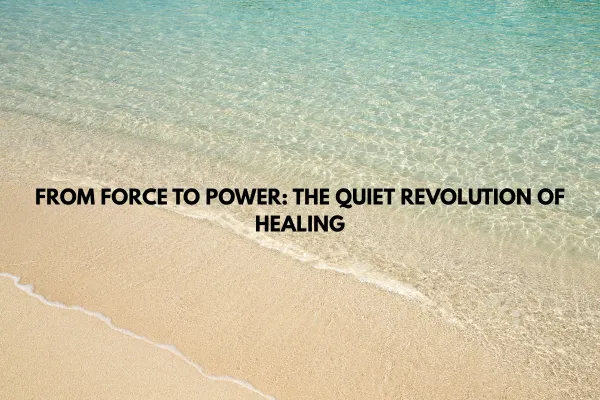
Power, Presence, and the Somatic Shift: Why Force Fails and Inner Wisdom Prevails
Power, Force, and the New Frontier of Healing: A Soul-Centered Comparison
In the quiet space between breath and thought, where the body softens and the spirit leans inward, we find an ancient choice. One path is shaped by force—tight, reactive, and exhausting. The other is moved by power—steady, open, and inherently healing. Power vs. Force, by David R. Hawkins, speaks directly to this distinction, revealing how our inner states of consciousness shape everything from biology to belief.
As a medical support clinical hypnotherapist, I often sit with individuals navigating the residual effects of uncomfortable past events. These are moments that left a mark—on the nervous system, on the breath, and on the body’s memory. When we meet those experiences with force, we unknowingly reinforce the very patterns we’re seeking to shift. But when we meet them with power, we access the deeper wisdom of the body, and allow transformation to unfold.
Hawkins’ exploration of calibrated consciousness demonstrates this elegantly. Force, as he describes it, is rooted in control, resistance, and the illusion of separation. It demands effort. It pushes. It dominates. Power, by contrast, is rooted in truth and coherence. It doesn’t have to prove anything. It emanates from within and carries with it a quiet authority that invites trust, clarity, and inner safety.
Medical support clinical hypnotherapy is an expression of power—not power over the client, but power with the client. In session, we don’t seek to override the subconscious or silence the symptoms. Instead, we enter into a relationship with the body’s natural intelligence. We follow its metaphors, its images, its sensations. This approach honors the body’s language and creates space for integration.
Complementary support strategies like hypnotherapy do not replace medical care—they enhance it. They bring the inner world into the healing equation. They ask: What might your body be trying to say through this discomfort? What meaning lives beneath this pattern? What part of you is asking to be met with compassion instead of correction?
In recent years, we’ve seen a rapid expansion in technology’s role in mental and emotional well-being. AI-driven chatbots, for instance, are becoming more prevalent in the support landscape. At first glance, this may seem cold or impersonal. But when used with awareness and intention, chatbot technology can become a bridge—a companion offering gentle presence, reflection, and grounded tools during times when a human practitioner isn’t immediately available.
Of course, it depends on how the technology is used. If it operates from force—seeking to control behavior, automate responses, or replace human connection—it loses its healing potential. But when it functions as an extension of power—offering stabilizing prompts, reflective listening, and somatic cues—it becomes part of a larger field of support. It reminds the individual that help is available, even in the middle of the night, even in the silence between sessions.
Complementary support strategies, including mindfulness, guided imagery, and hypnotherapy, teach us that healing does not always require analysis. Sometimes, it simply requires presence. The body doesn’t need to be convinced—it needs to be heard. And the subconscious does not respond well to coercion. It responds to resonance.
Power vs. Force reminds us that our inner state is not separate from our outer experience. When we live from force, we experience contraction in every form: muscle tension, limiting beliefs, emotional fatigue. When we move from power, we begin to experience coherence—between mind and body, between intention and action, between past experience and present awareness.
Those who’ve lived through uncomfortable past events often learn to armor themselves against the world. This armor is understandable. It was protective. But healing does not require us to dismantle that armor with a crowbar. It invites us to melt it from within, through warmth, through listening, and through reconnection with our own essence.
This is the beauty of combining the insights of Hawkins, the precision of hypnotherapy, and the evolving reach of compassionate technology. Together, they support the nervous system in recalibrating toward ease. They support the individual in returning to a state where clarity, safety, and choice are available again.
We are not meant to power through our pain. We are meant to partner with it, walk beside it, and invite it to soften. Not by force—but by power. Not through domination—but through devotion.
And this is the invitation of complementary support: to remember that we are not broken. We are brilliant systems of intelligence learning to harmonize with our own truth.
When we shift from force to power, from resistance to resonance, we don’t just move forward—we return home.